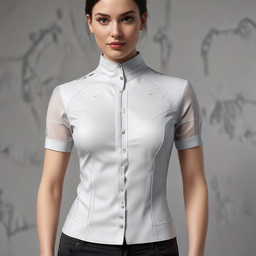Thanks to technological integration, the fashion business has experienced a significant makeover. Technology has transformed the way fashion is produced and worn from design to manufacture.
Planning and Development in Design
Fashion designers now consider computer-aided design (CAD) as a necessary tool since it lets them develop digital designs, test several fabrics and styles, and see their creations before they are physically produced.
 3D printing has given fashion designers fresh opportunities to produce bespoke clothing, accessories, and even shoes. It also speeds up prototyping and lowers waste.
3D printing has given fashion designers fresh opportunities to produce bespoke clothing, accessories, and even shoes. It also speeds up prototyping and lowers waste.
Virtual fitting rooms give consumers a more personalized and convenient shopping experience by letting them digitally try on clothing. This technology can raise customer satisfaction and aid to lower returns.
Manufacture and Production
Robotic arms and other automation technologies are helping to simplify manufacturing processes, raise efficiency, and lower labor costs.
Consumer Experience and Retail Setting
Not only just the producers benefit from this setup but also the end-users:
E-commerce
Fashion technology has been important in improving the online shopping experience since internet buying has become widespread. Consumers now find it simpler to buy apparel online, thanks in part to features including virtual try-ons, tailored recommendations, and smooth checkout systems.
Omnichannel Retail
Omnichannel retail—which combines online and physical channels—is starting to take the stage. Fashion technology helps stores give a consistent customer experience across all media, like in-store pickup for online orders or augmented reality to see goods in actual environments.
One Last Thought
Fashion technology might revolutionize the sector in many different respects. Fashion companies that embrace these developments can raise customer satisfaction, efficiency, and environmental impact. As technology develops, we should expect ever more creative and fascinating advancements in the realm of fashion.
